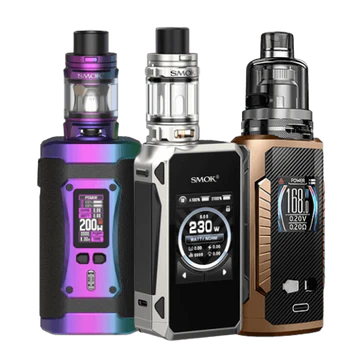Do Vapes Set Off Smoke Alarms? Everything You Need to Know
Vaping has grown in popularity as a less harmful alternative to smoking, but many vapers wonder whether their devices can set off smoke alarms. Understanding how smoke alarms work and how vapor interacts with them is crucial, especially in public spaces, workplaces, or rental accommodations.
Thank you for reading this post, don't forget to subscribe!While vapes do not produce smoke, the dense vapor they emit can sometimes trigger smoke alarms. This depends on the type of alarm and the conditions in which vaping occurs. Knowing what factors influence this interaction can help vapers enjoy their devices without causing unnecessary disruptions.
How Smoke Alarms Work
1. Ionization Smoke Alarms
These alarms detect particles in the air caused by combustion, such as those produced by smoke from a fire. Vapor particles from vapes are usually too large to trigger these alarms.
2. Photoelectric Smoke Alarms
Photoelectric alarms use a light sensor to detect particles in the air. Dense vapor clouds from vapes can scatter the light beam and potentially set off these alarms.
3. Heat Detectors
Heat detectors respond to temperature changes and are not triggered by smoke or vapor. These alarms are safe for vaping environments.
4. Combination Alarms
Some modern alarms combine ionization, photoelectric, and carbon monoxide detection. These devices are more sensitive and may be triggered by dense vapor clouds.
Factors That Affect Whether Vapes Trigger Smoke Alarms
1. Type of Smoke Alarm
Photoelectric alarms are more likely to respond to vapor clouds due to their sensitivity to particles in the air.
2. Volume of Vapor
The larger and denser the vapor cloud, the greater the chance of setting off an alarm. High-powered devices like sub-ohm vapes produce more vapor and are more likely to trigger alarms than low-powered devices.
3. Proximity to the Alarm
Vaping directly under or near a smoke alarm increases the likelihood of triggering it. Vapor dissipates quickly, so maintaining distance from alarms reduces the risk.
4. Ventilation
Well-ventilated spaces allow vapor to disperse quickly, decreasing the chances of setting off a smoke alarm.
5. Humidity and Temperature
High humidity or temperature can affect how vapor behaves in the air, potentially making it more likely to set off a sensitive alarm.
How to Avoid Triggering Smoke Alarms While Vaping
1. Keep a Safe Distance
Avoid vaping directly under or near smoke alarms. The farther you are from the alarm, the less likely it is to detect vapor.
2. Use Discreet Devices
Opt for low-powered devices like pod systems that produce less vapor, reducing the chances of triggering an alarm.
3. Increase Ventilation
Open windows or use fans to disperse vapor quickly. This prevents vapor from accumulating and setting off alarms.
4. Test the Environment
In spaces with unknown alarm sensitivity, start with small vapor clouds to gauge whether the alarm is likely to respond.
5. Notify Relevant Parties
If vaping is necessary in a specific location, inform property managers or event organizers to ensure understanding and cooperation.
Public Spaces and Vaping
Many public spaces, such as airports, hotels, and offices, have strict rules about vaping. Smoke alarms in these areas are often highly sensitive to prevent any risk of fire.
Airports and Flights
Vaping is typically prohibited in airports and onboard flights. The dense vapor can trigger sensitive smoke alarms in these environments, leading to fines or other penalties.
Hotels
Some hotels allow vaping in designated areas, but smoke alarms in guest rooms and common spaces are often sensitive to vapor. Always confirm the hotel’s policy on vaping before use.
Workplaces
Workplaces may have policies regarding vaping indoors, and smoke alarms in these areas can be triggered by vapor. Opt for outdoor spaces when possible.
Conclusion
Vapes can set off smoke alarms under certain conditions, particularly if the alarms are photoelectric or highly sensitive. However, understanding the type of alarm, using low-powered devices, and vaping in well-ventilated areas can minimize this risk.
By being mindful of your surroundings and taking precautions, you can enjoy vaping without inadvertently triggering smoke alarms or violating policies.
FAQs
- Can all types of vapes set off smoke alarms?
High-powered devices producing dense vapor clouds are more likely to trigger alarms than low-powered or pod systems. - Which smoke alarms are most sensitive to vapor?
Photoelectric smoke alarms are more likely to detect vapor due to their sensitivity to particles in the air. - Does vaping in a well-ventilated room help?
Yes, proper ventilation disperses vapor quickly, reducing the likelihood of triggering an alarm. - Can I vape on a plane without setting off the alarm?
Vaping is prohibited on flights, and sensitive smoke alarms onboard can easily be triggered by vapor. - What should I do if I accidentally set off a smoke alarm while vaping?
Follow the building’s emergency protocol and inform relevant authorities immediately to clarify the situation.







